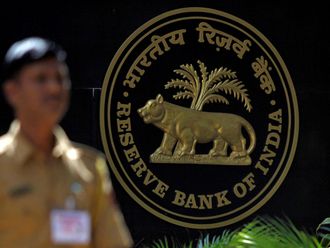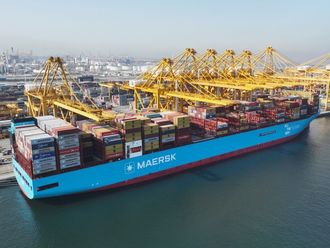After scaling a series of record highs fatigue underscored Indian shares over the past few days, and this trend should hold for the coming weeks as the government prepares to kick off divestments — selling holdings in state-run companies — a process that will sharply increase supply of free floats and suck investor cash away from the secondary market.
Data released after markets closed on Friday showing industrial production at a four-month low in July and stubborn retail inflation should weigh on stocks, especially because the central bank is unlikely to shift its pause stance on rates when it reviews policy at the end of this month. The US Federal Reserve policy-setting meeting on Wednesday would also be on the radar, with any rate increase casting a shadow on foreign fund flows.
While consumer prices climbed at an annual pace of 7.8 per cent in August, led by fruits that surged 24 per cent and vegetables at 15 per cent, output at mines, utilities and factories grew just 0.5 per cent in July, sharply slower than 3.9 per cent rise in June and a 19-month high of five per cent in May.
The fall in world oil prices to below $100 (Dh367) a barrel and bountiful rains over the past two weeks should help cool inflation pressures, arising from fuel costs and farm output. Goldman Sachs, which had forecast the Reserve Bank of India to raise interest rates, has changed its view and expects the central bank to stay pat on rates.
“We now expect the policy repo rate to stay at 8 per cent for a protracted period of time — through 2014 and 2015,” Mumbai-based economist Tushar Poddar at the US investment bank said in a report earlier this week.
Divestment plans
Prime Minister Narendra Modi’s cabinet on Wednesday approved a proposal to sell stakes in three companies — energy explorer Oil and Natural Gas Corp, the country’s biggest oil producer, Coal India Ltd, and utility National Hydroelectric Power Corp. The divestment could potentially raise nearly Rs450 billion, or $7.5 billion, and help the government to keep its fiscal deficit within target.
Although part of the sale would be reserved for small retail investors, a large chunk would be bid by large institutions, including foreign portfolio funds. In other words, investors would conserve their cash to participate in the sale, which would be priced at a discount to the market rate.
Coal India, the world’s biggest coal miner, is likely to be the first to get off the blocks, probably in the run up to Diwali, the festival of lights, in late October. The government, which owns nearly 90 per cent, aims to sell 10 per cent that could fetch as much as Rs235 billion. A five per cent sale in Oil and Natural Gas Corp and 11.36 per cent offering in National Hydroelectric Power Corp would be staggered later.
Ahead of these there is a likelihood of stake sale in Steel Authority of India Ltd, the biggest domestic producer of steel, probably by the end of this month. The government had approved the offering earlier and has been waiting for the right time to divest. Because steel makers are yet to come out of a slowdown, there is some uncertainty about the near-term prospects.
“The supply overhang will be a drag on the market in the near term, but it is unlikely to douse the bullish mood,” said equity salesman Mahesh Dalal. “There is still a long way to catch up with the earnings upgrade. So the overall trajectory would be an upward climb, at a slower pace and with intermittent pullbacks.”
Calling the shots
The flow of foreign money into India has gathered speed on the back of the business-friendly Modi’s decisive victory in general elections, and the new government’s first 100 days in office has been widely credited for cutting red-tape and granting approvals, wooing investors and laying out the red carpet for manufacturing.
“The government machinery is firing on all cylinders,” Bhuvnesh Singh, Vijit Jain and Rachna Biyani, analysts at Barclays Capital, wrote in a report after visiting policymakers, bureaucrats, industrialists and government officials.
“Most participants concurred that PM Modi is running a tight ship — the focus is on time-bound decision-making, increasing transparency in the process for granting industrial approvals and simplifying overall government processes.”
Undoubtedly, the change in government is drawing international interest. The Chinese premier will fly to the subcontinent next week to enhance economic ties, including a commitment to invest $100 billion over five years in building industries in India.
His visit follows Modi’s trip to Tokyo, where Japanese businesses agreed to invest $35 billion over five years in manufacturing hubs in India. Later this month, Modi is scheduled to fly to Washington for a one-on-one with US President Barack Obama and meetings with big businesses there.
Net foreign direct investment jumped to $11.5 billion during April-July, the first four months of the current financial year, from $8.4 billion over the same period a year earlier.
“We expect FDI inflows to gain further momentum. Investor sentiment has improved, domestic confidence has revived, growth is on a recovery path and the government is focused on improving the ease of doing business,” Nomura economists Sonal Varma and Aman Mohunta said in a note.
They expect net FDI in 2014-15 to top $30 billion, or 1.4 per cent of GDP, from $22 billion (1.1 per cent of GDP) in the previous year.
Bulls in charge
The top-30 Sensex and the broader Nifty ended the week with modest gains at 27,061.04 and 8,105.50 respectively, and could see some correction when trading resumes on Monday.
Overseas investors, the dominant player in Indian markets, have bought shares worth about $14.5 billion this year, taking total inflows including in debt securities to more than $32 billion. A possible rise in US rates could see a pullback from riskier emerging markets, but pundits with an ear to the ground say there are new investors waiting in the wings to scoop up shares at declines.
“The Indian markets have rallied 30 per cent over the past six months led primarily by valuation re-rating,” equity analysts Piyush Nahar and Apurva Kumar at brokerage Jefferies said in a report, pointing out that past economic recovery driven market rally lasted 7-8 months with stock prices doubling.
“The current rally has then been moderate in terms of the performance and the trend could, in our view, continue for a couple of more months if history is any indication.”
Big investment plans should underpin the markets. Transport Minister Nitin Gadkari said on Friday the government aims to kick off Rs2 trillion of infrastructure projects this year, which would be a huge boost to several industrial segments such as steel and cement besides improving road, railway, port and airport networks.
“We continue to remain bullish on Indian markets with a Nifty target of 8,800-9,000 for the medium term,” analysts Debashish Mazumdar and Malavika Mundra at Edelweiss Securities wrote in a note.
The writer is a journalist based in India.












